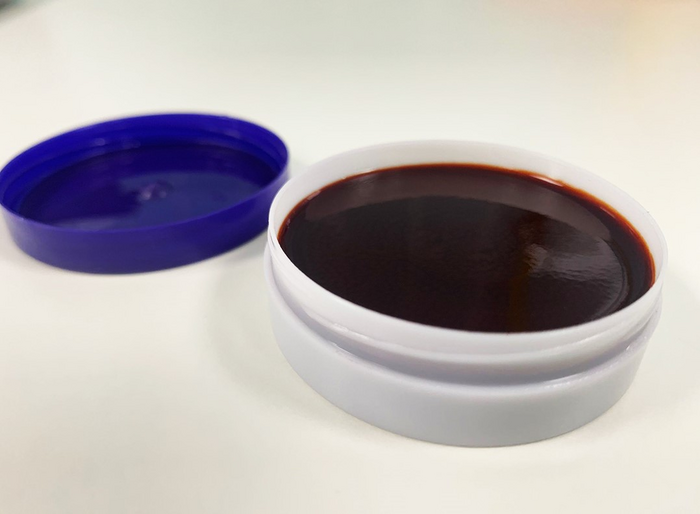Lipstick can be a confidence booster, enhance a costume and keep lips from chapping. But sharing a tube with a friend or family member can also spread infections. To develop a version with antimicrobial properties, researchers reporting in ACS Applied Materials & Interfaces have added cranberry extract to the formulation. Their deep red cream quickly inactivates disease-causing viruses, bacteria and a fungus that come in contact with it.

Credit: Adapted from ACS Applied Materials & Interfaces 2022, DOI: 10.1021/acsami.2c19460
Lipstick can be a confidence booster, enhance a costume and keep lips from chapping. But sharing a tube with a friend or family member can also spread infections. To develop a version with antimicrobial properties, researchers reporting in ACS Applied Materials & Interfaces have added cranberry extract to the formulation. Their deep red cream quickly inactivates disease-causing viruses, bacteria and a fungus that come in contact with it.
According to historians, people in ancient Egypt were the first to use make-up, applying pastes made from minerals and other substances in their environment. The formulations have evolved over the centuries, but now researchers have come full circle, looking again toward natural ingredients. For example, recent studies have reported that lipstick formulas incorporating natural colorants, such as red dragon fruit, can result in products with both vibrant colors and antimicrobial activity. And previously, cranberry extract has been shown to inactivate viruses, bacteria and fungi. So, Ángel Serrano-Aroca and colleagues wanted to use cranberry extract to create a deep red lip tint with antimicrobial properties.
The research team mixed cranberry extract into a lipstick cream base, which contained shea butter, vitamin E, provitamin B5, babassu oil and avocado oil. In experiments, the reddened cream was added to cultures containing different viruses, bacteria and one fungal species. Both enveloped and non-enveloped virus types were completely inactivated within a minute of contact with the cranberry-containing cream. And the multidrug-resistant bacteria, mycobacteria and fungus were substantially inactivated within five hours of applying the cream. The researchers suggest that their novel lipstick formula could offer protection against a variety of disease-causing microorganisms.
The authors acknowledge funding from the Fundación Universidad Católica de Valencia San Vicente Mártir and the Spanish Ministry of Science and Innovation.
The American Chemical Society (ACS) is a nonprofit organization chartered by the U.S. Congress. ACS’ mission is to advance the broader chemistry enterprise and its practitioners for the benefit of Earth and all its people. The Society is a global leader in promoting excellence in science education and providing access to chemistry-related information and research through its multiple research solutions, peer-reviewed journals, scientific conferences, eBooks and weekly news periodical Chemical & Engineering News. ACS journals are among the most cited, most trusted and most read within the scientific literature; however, ACS itself does not conduct chemical research. As a leader in scientific information solutions, its CAS division partners with global innovators to accelerate breakthroughs by curating, connecting and analyzing the world’s scientific knowledge. ACS’ main offices are in Washington, D.C., and Columbus, Ohio.
To automatically receive news releases from the American Chemical Society, contact [email protected].
Follow us: Twitter | Facebook | LinkedIn | Instagram
Journal
ACS Applied Materials & Interfaces
DOI
10.1021/acsami.2c19460
Article Title
“Antimicrobial Lipstick: Bio-based Composition against Viruses, Bacteria, and Fungi”
Article Publication Date
14-Dec-2022




